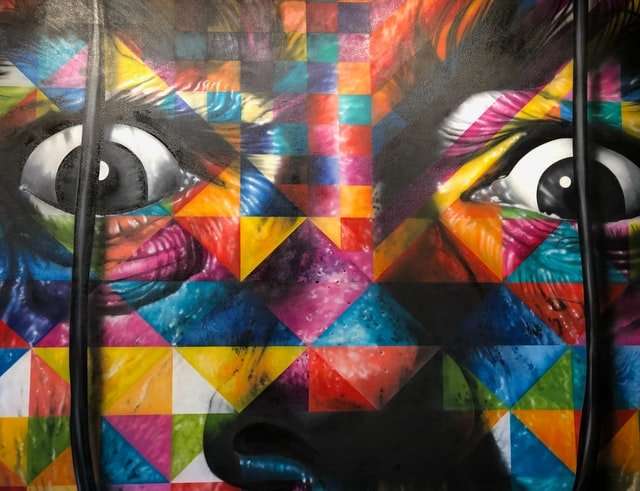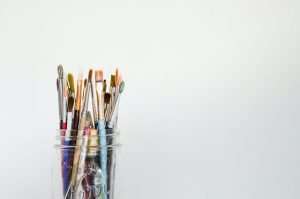Most pieces of art that are considered good come from artists who have good practice, who are familiar with their medium, and stay up to date on the state of the art. I want to write a blog about how it feels to be a professional artist in the field of cryptoart and specifically how I came to be interested in it.
Cryptoart is an inclusive term for any work of art that combines cryptography with an artistic medium. For example, a painting based on pixel encryption, or a sculpture based on elliptic curve multiplication.
The idea for this blog came from reading Andy Boot’s Cryptoart Blog . I am inspired by his dedication to writing about the process of making cryptoart, and his knowledge about the field.
I would like to focus more on my own opinions and experiences as a cryptoartist. I will also be discussing my own works, but mostly as examples to illustrate my points.
If you’re reading this, you’re probably familiar with cryptoart. It is art that cryptographically proves ownership of something. Cryptoart is exciting to people because it is such a new artform, and because it has the potential to be such a paradigm shift in the way we view ownership and the value of art. It blurs the lines between what we normally see as art and what we normally see as technology.
In fact, it’s so new that there isn’t really even a consistent definition for what cryptoart is just yet. There are plenty of people out there making things that are some combination of cryptographic primitives and art, but each person seems to define their own parameters for what constitutes cryptoart.
What I want to do with this blog is share with you my own ideas about what makes good cryptoart, how to set up your own installation or piece, and some other basic steps into the world of cryptoart. This blog will be meant for all levels of technical ability, from brand new beginners all the way up to experienced cryptographers who want more context around their work. I will try to include code examples, pictures of code being run, links to other resources on the internet, and write in an engaging style that makes it easy to get started
The crypto art community have been producing and trading original fine art (painting, drawing, sculpture, installation, photography, video) for several years now. Most of it is traded over the internet via various marketplaces or in person at events.
At the same time there has been a lot of discussion among crypto art practitioners on what constitutes good practice with regards to mediums used, materials employed and especially sourcing materials.
Some of these discussions have led to setting up a rating system that can be used to evaluate different crypto artists and their pieces on ethical grounds.
A rating system is an excellent way to communicate best practices and encourage people to pay attention to things that might otherwise be overlooked. We think that this could be a good way to keep the field growing in an ethical manner.
The rating system will be based on 6 different categories: 1) Materials used 2) Labor 3) Environmental impact 4) Transparency 5) Originality 6) Price. The overall score will be based on these categories weighted by importance according to the particular artist/gallery/collector.
As a crypto artist, I’ve been thinking a lot about what it means to create work that has meaning and value. Cryptoart is a new field, and there are many ways we can go about this. We need to find ways that not only make sense to us as artists, but also serve the greater good of the community at large.
Descriptions like “a digital token on the Ethereum blockchain” don’t mean anything outside of crypto. Most people won’t know what you’re talking about if all you say is “I’m making a token.” Saying something like “I’m making a token that allows users to have their own avatars that live on the blockchain” gets closer, but it doesn’t really paint the picture for non-crypto people.
What I’m saying is that art needs to be able to explain itself, or at least be able to benefit from some sort of explanation or framing for those who aren’t familiar with it. Art in general carries with it an inherent level of uncertainty and confusion; we’re supposed to be asking questions about why things are the way they are, trying to understand them. But when art becomes more removed from reality and less relatable in any way, it becomes harder for others to connect with it and engage
The problem with crypto art is that it is still in its infancy. There are no established rules or precedents as to what makes a particular piece good or bad. This is not to say that there are no criteria by which to judge crypto art, but rather that there is no commonly agreed upon set of standards by which those criteria can be applied.
Crypto art needs a set of standards, and it needs them now before the field becomes over-saturated with meme-like junk and the market stagnates.
It is important to always remember that we are in a very new field. We are creating the language, the techniques and the processes as we go along. Each artist has their own style and voice, but it is important to keep the integrity of all cryptoart high.
A cryptoartist should be mindful of their audience: anyone who comes across their work should be able to understand how it was made. When you view a piece of art, you should be able to tell where it came from, who made it and why. You should also be able to tell if it’s been compromised or altered in any way.
Artists with integrity will never alter their own work for any reason other than for display purposes on its original medium; altering displays the irrevocability of blockchain technology: once a transaction is confirmed, it cannot be reversed—even by an administrator.
Artists should also remain truthful to themselves and display only the artwork they have created themselves; not forgery or plagiarism.”
Crypto art is a form in which crypto currency can be used as a medium of exchange, and has recently been gaining popularity in the art world. The concept has been around for decades but most works have been produced by individual artists and were not seen by many people. However, in recent years, crypto-artists have started to organize into collectives and show their work at galleries. It is interesting to note that these new crypto-art collectives are working together to create a genre of art that spans the computer science and art communities.
The purpose of this blog is to show how cryptoartists are working together to make high-quality artistic works. This will be done by highlighting the best cryptoart on the web, providing tips for aspiring crypto-artists, and writing about the business side of crypto-art.



